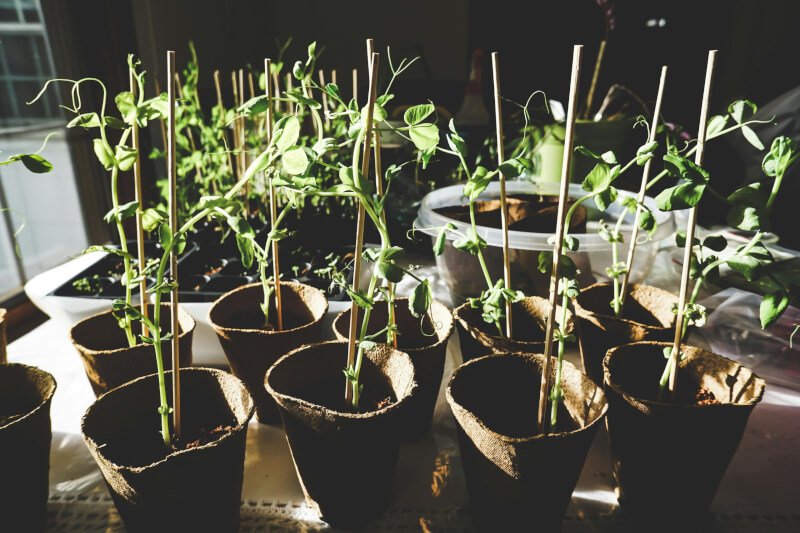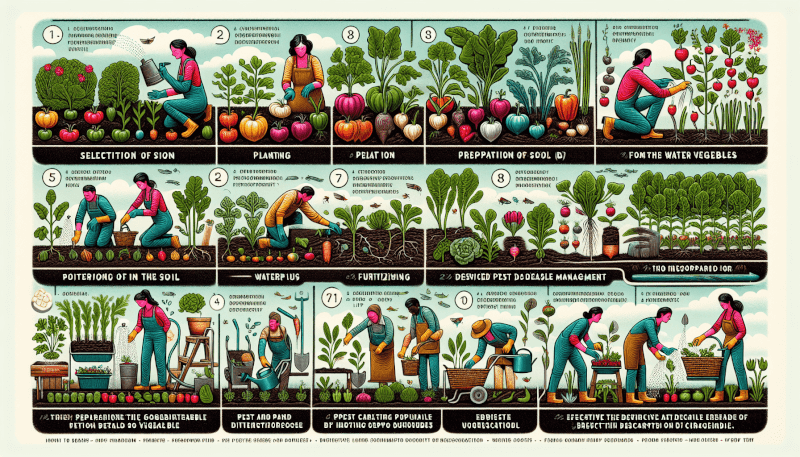If you’ve ever wanted to enjoy fresh, organic vegetables straight from your own garden but didn’t know where to start, fear not! This article will guide you through the steps of growing and harvesting your own healthy garden vegetables, making it easier than ever to have a thriving garden right outside your door. From choosing the right vegetables for your climate to providing them with the necessary sunlight and water, you’ll have all the knowledge and tips you need to cultivate a fruitful and sustainable garden. Get ready to discover the joy of growing your own food and reaping the delicious rewards!
Selecting the Right Location
When it comes to growing your own garden vegetables, one of the first things you need to consider is finding the right location. Sunlight exposure is key for the healthy growth of your vegetables, so choose an area that receives at least six to eight hours of direct sunlight each day. Additionally, check the soil quality to ensure it is suitable for vegetable growth. Conduct a soil test to determine the pH level and nutrient content of the soil. Lastly, assess the drainage and water availability in the area. Proper drainage is essential to prevent waterlogging, while having easy access to water will make it convenient for you to water your plants regularly.
Planning Your Garden Layout
Once you have selected the perfect location for your vegetable garden, it’s time to plan the layout. First, decide on the types of vegetables you want to grow. Consider the space available and the specific needs of each vegetable. Next, think about companion planting, which involves planting different types of plants together to maximize their growth potential. Some plants naturally complement each other by repelling pests or attracting beneficial insects. Additionally, make use of crop rotation to optimize the use of your garden space. By rotating the crops each season, you can avoid depleting the soil of specific nutrients and reduce the risk of pests and diseases.

Preparing the Soil
Proper soil preparation is a crucial step in creating a healthy foundation for your vegetable garden. Begin by clearing the area of any debris and weeds, as they can compete with your vegetables for nutrients and water. Next, test the soil to determine its composition and nutrient levels. Based on the results, amend the soil by adding organic matter such as compost or well-rotted manure to improve its fertility. Lastly, till or turn the soil to break up any compacted areas and create a loose, aerated environment that promotes root growth.
Starting Seeds or Transplants
When it comes to starting your vegetables, you have the option of using either seeds or transplants. Seeds are more cost-effective and provide a wider variety of plant options, while transplants offer a head start and quicker harvest. If you choose to start seeds indoors, make sure you provide them with adequate light, warmth, and moisture. Transplants, on the other hand, should be hardened off before planting them outdoors. This involves gradually exposing them to outdoor conditions over a period of a few weeks to acclimate them to the new environment.

Planting Your Vegetables
Planting your vegetables correctly is essential for their growth and development. Always follow the recommended seed depth and spacing guidelines, as different vegetables have different requirements. Providing proper watering after planting is crucial to ensure their establishment. Water deeply, making sure to saturate the root zone, and avoid overhead watering, which can promote the spread of diseases. If you have limited space or poor soil quality, consider using raised beds or containers. This allows you to control the soil quality and minimize the risk of weeds and pests.
Providing Adequate Watering
Watering is a critical aspect of maintaining a healthy vegetable garden. Establishing a watering schedule based on the specific needs of your plants will help ensure they receive the right amount of water. It is generally recommended to water deeply and less often, as this encourages the roots to grow deeper into the soil. Watering at the base of the plants, directly onto the soil, rather than overhead, will minimize the risk of fungal diseases and ensure the water reaches the root zone effectively.

Fertilizing Your Vegetables
Proper fertilization is key to providing your vegetables with the necessary nutrients for optimal growth and productivity. When choosing fertilizers, you can opt for either organic or synthetic options. Organic fertilizers, such as compost or manure, are a sustainable and environmentally friendly choice, while synthetic fertilizers offer precise nutrient content. Follow the recommended fertilizer rates for each specific vegetable, as over-fertilization can result in nutrient imbalances or even damage to the plants. Additionally, apply fertilizers at the right time, typically during planting or when the plants are in their active growth stage.
Managing Garden Pests and Diseases
Maintaining a healthy garden means also managing and preventing pests and diseases. Start by identifying common pests in your area and researching their prevention and control methods. Implement organic pest control methods, such as handpicking pests, using physical barriers, or attracting beneficial insects. Regularly monitor your plants for signs of diseases, such as unusual spots, discoloration, or wilting. Promptly address any signs of trouble by pruning affected areas, applying organic fungicides, or seeking advice from local gardening experts.

Regular Weeding and Maintenance
Regular weeding is essential for keeping your vegetable garden healthy and productive. Weeds compete with your vegetables for space, nutrients, and water, and can quickly overrun your garden if left unchecked. Remove weeds regularly, either by hand or using appropriate tools, making sure to remove the entire weed, including the roots. Applying mulch around your plants can help suppress weed growth by blocking sunlight and acting as a barrier for weed seeds. Additionally, monitor your plants for any signs of stress, such as wilting or yellowing leaves, and take immediate action to address the underlying issues.
Harvesting and Storing Your Vegetables
The ultimate reward of growing your own garden vegetables is the bountiful harvest at the end. Knowing when to harvest each vegetable is crucial for maximizing flavor and nutritional value. Generally, vegetables are harvested when they reach their peak ripeness and color. Use proper harvesting techniques to avoid damaging the plants or the produce. For example, gently twist or cut stems to harvest fruits and vegetables, taking care not to bruise or break them. Lastly, store your vegetables properly to extend their freshness. Some vegetables, like root crops, can be stored in a cool, dark place, while others, like leafy greens, are best stored in the refrigerator to maintain their crispness and flavor.
By following these steps, you can successfully grow and harvest your own healthy garden vegetables. Enjoy the process and savor the rewards of your hard work and dedication. Happy gardening!


